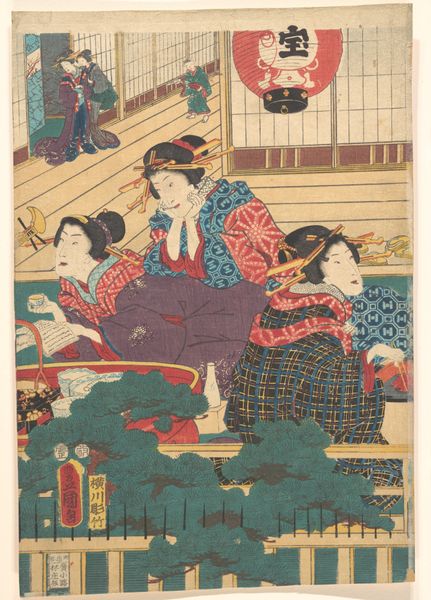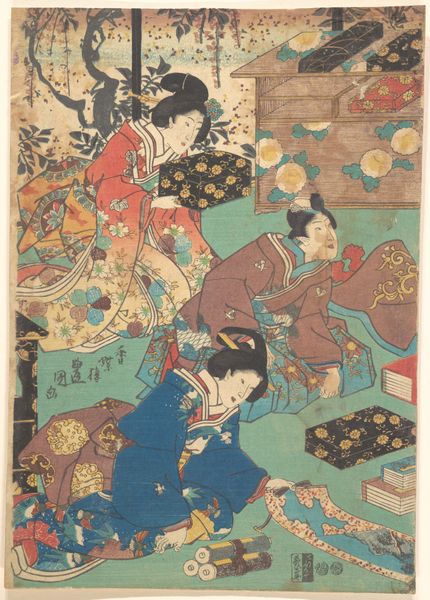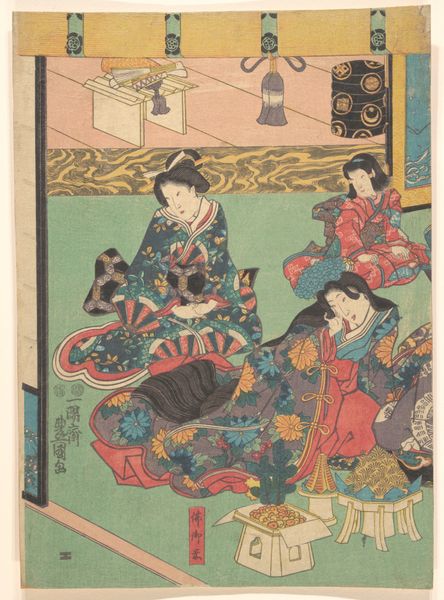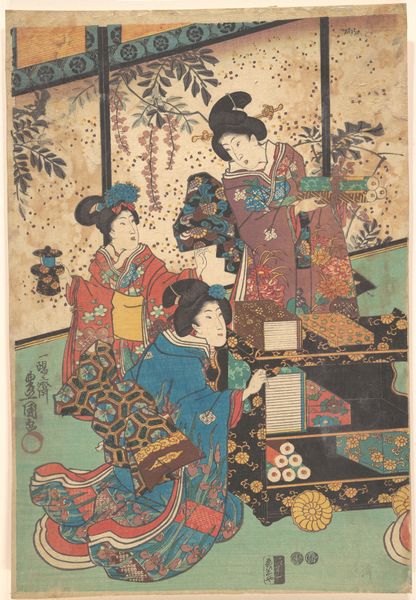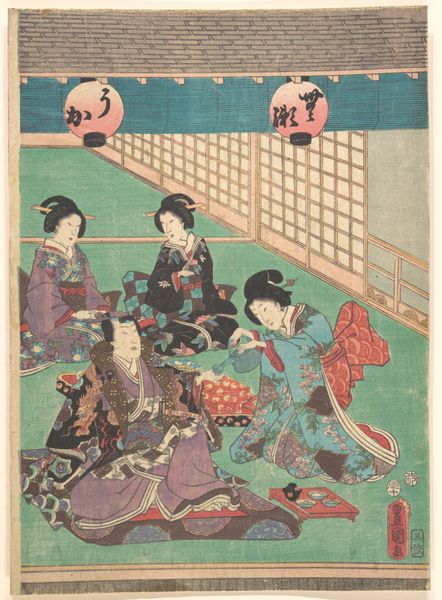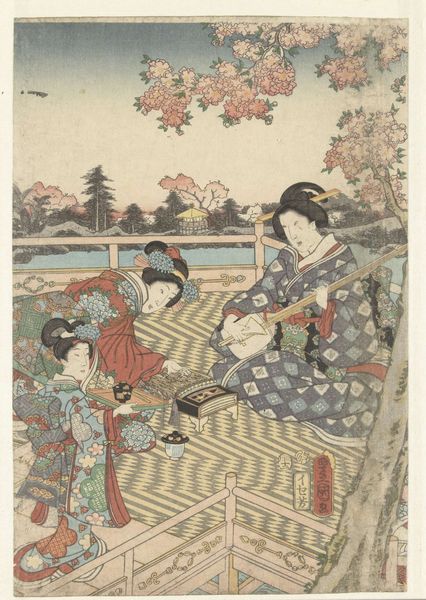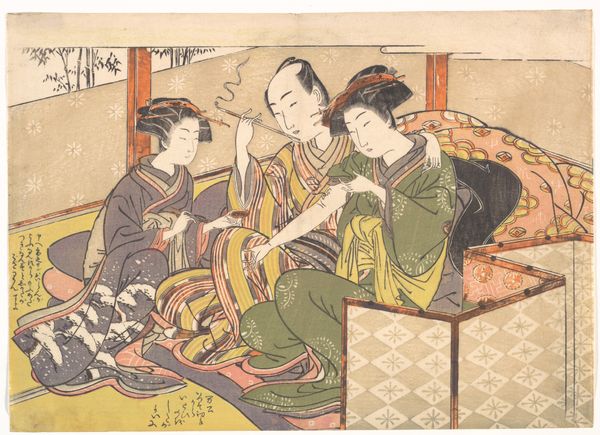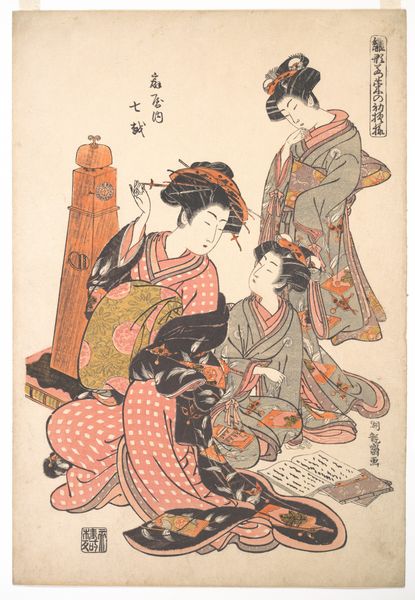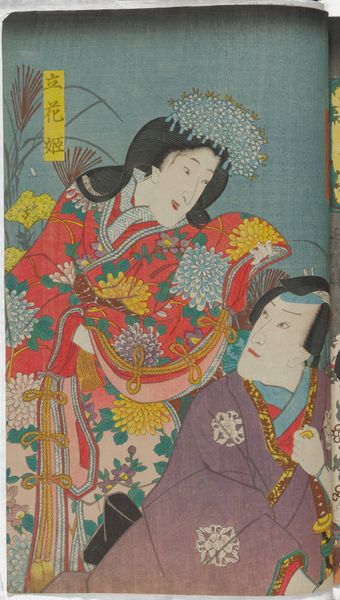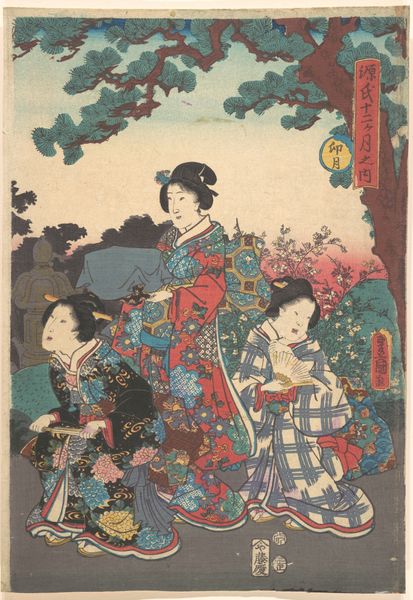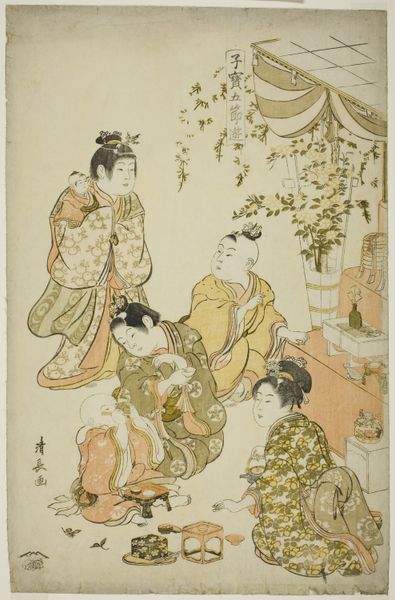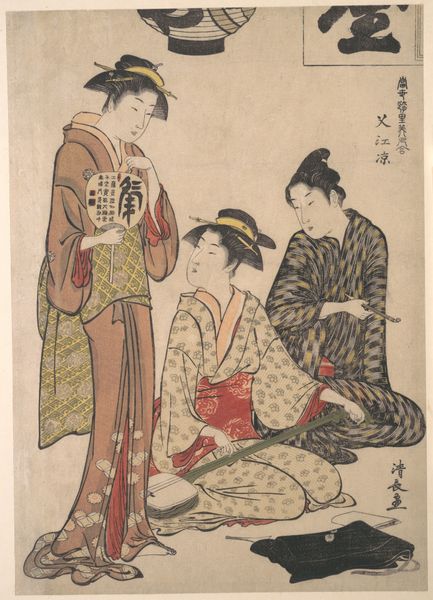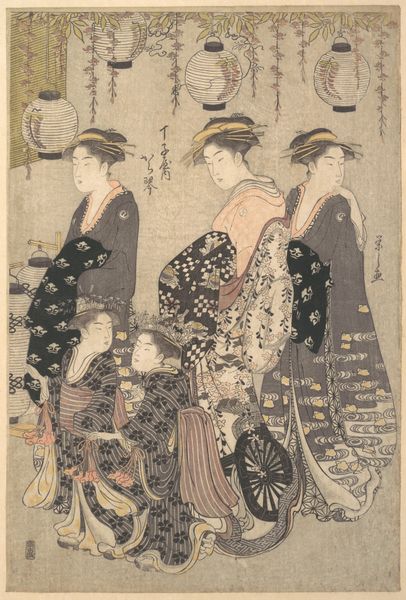
print, woodblock-print
# print
#
asian-art
#
ukiyo-e
#
figuration
#
woodblock-print
#
genre-painting
Dimensions: Image: 14 1/8 × 10 1/8 in. (35.9 × 25.7 cm)
Copyright: Public Domain
Editor: So, this print, just titled "Print," by Utagawa Kunisada, made sometime between 1786 and 1854... it feels incredibly intimate, doesn't it? Like we're intruding on a private moment. What's your interpretation of it? Curator: Indeed, and that perceived intimacy is precisely where much of its power lies, as a product and reflection of its social context. This is ukiyo-e, or "pictures of the floating world," a genre that flourished during the Edo period, capturing everyday life and popular culture. How might this function as more than simple documentation? Editor: Hmm, so you're saying it's more than just a snapshot? I guess it is pretty stylized, the way they're all arranged together in this compressed space. Curator: Exactly. Think about the consumers of these prints. Who were they, and what kind of social anxieties or desires might such imagery tap into? The print provides a controlled view into female social circles, possibly those of courtesans, a topic of both fascination and regulation in Edo society. Editor: Okay, I see. It’s not just showing what exists, but maybe shaping how people see it, too? The artist is almost controlling the narrative by who they choose to show, what activity they are engaged in and how their beauty is framed, or not framed. Curator: Precisely. How might the stylistic conventions, the flat perspective, the emphasis on pattern, contribute to this controlled and idealized vision? And what impact would its mass production have? Editor: I hadn’t considered the impact of mass production. Thinking about it as something that would have circulated widely, shaping perceptions of women, makes me see it completely differently. Curator: It’s in these intersections – art, social structure, mass culture, that history truly illuminates our understanding of images. It’s a delicate balance between observing a composition and contextualizing it, I think. Editor: I've learned so much about how to read a simple composition based on the historical forces influencing it. Curator: And hopefully a more socially informed way of observing any image.
Comments
No comments
Be the first to comment and join the conversation on the ultimate creative platform.
